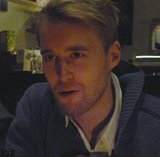
Data-gathering and computational analysis produce complex objects and events beyond human perception and conceptualization – their ontological force depends on the interface and its production of affective acknowledgement of aggregate big data entities without immediate reference to the sensible world (Hansen, forthcoming). Drawing on Galloway’s notion of the ‘interface effect’ as the “mediating thresholds of self and world” (Galloway 2012: viii), the project examines the affective response necessary to establish evidential persuasiveness, importance and actionability 1) as matter of fact within the digital humanities (academic data visualisations (Galloway 2014)) and 2) as matter of concern demanding public action (flash crash (Nestler 2014), climate models (Morton 2013) and threat assessments (Massumi 2007)). The subproject thus contributes with an analysis of affective big data interfaces in the intersection between the aesthetic display of data, the ontology and epistemology of the digital and collective political agency.

This subproject extends the analysis proposed in the previous subprojects into the realm of practice-based experimentation and research-through design (Frayling 1993; Zimmerman 2007). By engaging in two interaction design experiments with the creation of affectively engaging interfaces (Fritsch 2009, 2011) in affiliation with Centre for Advanced Visualisation and Interaction and Centre for Participatory IT, AU. The empirical material takes the form of two design processes that draw on the theoretical and analytic work carried out in the overall project; 1) ‘Ekkomaten’ (Fritsch et al. 2013) focuses on the design of an interactive listening machine that can be used to organize a collective listening– and storytelling process around a variety of civic themes in different communities in Aarhus and Montréal and 2)‘Urban Fabric(s)’ (Thomsen and Fritsch 2013) is concerned with developing new affective interfaces for bodily engagement and self-relation with wearable sensor technologies as a design material in cities (Aarhus, Zürich, Amsterdam, Berlin). The projects will result in two functioning prototypes that can be used to critically explore the affective modulations catalyzed by affectively engaging interfaces in interactive environments.

This project adds to existing international research on cyberbullying by focusing on the exchange of images on the apps Snapchat and Instagram. (Spears, Kofoed et al. 2011; Kofoed 2013) The subproject explores in what ways the interfaces of apps and social networking sites are highly affective and set the conditions for (destructive) relationality by the design of the interface. Exchange of images through social media is seen as an entanglement of interface designs, events and subjects in rows of affective ‘nows’ that might coincide with so called real-time, but can also be slowed down or sped up. It will be studied how multiple temporalities and affective tonalities are played out in a fieldwork amongst youth and their practices of image exchange, where affects travel (Kofoed and Ringrose 2012) across events and in/decrease intimacy and fear in what could be termed ‘affective rhythms’ (Kofoed 2013). The subproject contributes to the overall project by developing new concepts for the minute and complex processes of travelling affects in cases of cyberbullying amongst youth and, in a broader sense, how a visual economy comes into play when images are exchanged through interfaces at high speed in rows of affective ‘nows’.

Design activist interventions in public space have demonstrated that new media and technologies can be used to subvert existing power structures (whether social, political or institutional) thereby enabling new processes of participation, emancipation and appropriation in public space. To some extent these processes can, as argued by Markussen (2013), be explained through the development of a theory of ‘disruptive aesthetics’. Yet, it is the underlying assumption of this subproject that a theory of the disruptive aesthetics can be significantly elaborated if the role of affects in design activist interventions is studied more closely. Thus, by querying into ‘electronic civic disobedience’ projects by Ricardo Dominquez, the Institute for Applied Autonomy, among others this subproject studies how electronic and digital interface can be used affectively for the purpose of emancipating groups in society from political power and control. While ‘hacktivism’ is used as a term to refer to the activist use of hacking for a particular political purpose (Jordan, 2002), this project proposes ‘affectivism’ for understanding the ways in which media are used in these interventionist practices.
This project investigate how interface neworks relying on affective economies (Ahmed 2004) shape contemporary affective activism in regard to mobilization and support. Projects such as Greenpeace’s recent attack on Lego and Shell, The Yes Men’s media hoaxes, the Femen movement’s topless protests and the nude anti-censorship campaign in support of Ai Weiwei will be analyzed to show how networked interfaces facilitate “a transverse emergence” (Protevi 2009) in which events come into being in networked assemblages of affective, social, discursive, material, and technical components. The interface is investigated as an assemblage of human and nonhuman elements (Latour 2005; De Landa 2006; Anderson et al. 2012). Further, it is investigated how networked interfaces, embedded in visual, digital technology and database logics, mobilize online and offline support of the activist cause where the interface simultaneously work as a technical facilitator and a tool to create connections between people understood as affective crowdings. The subproject thus offers a new affectively based understanding of the interfaces shaping contemporary mediatized (Hjarvard 2008; Hepp 2013) or media-savvy activism.

This project explores the relational becoming between archive and event, past and future, and how the exteriorization of embodied memory in a consignment from the privacy of the body to a public archive becomes a prosthetic experience in which the subjectively felt experience becomes something else available for others to access and interpret (Derrida, 1995). Furthermore, the project investigates the role of the interface in such transmissions as diagrammatic folds between a private, intimate body and a public, exteriorized representation or mapping (Munster, 2006). Preserving the originality of a statement when transmitting data from one event to another without the interface filtering and distorting the mattering data is regarded impossible as it takes upon it signifying forms of expressions according to the circumstantial operations; the data informs the event and vice versa. Approaching information theory in an ecological manner beyond the traditional Shannon & Weaver scheme, the project works with the notion of the anarchive, an archive in motion productively moving between structured organization and chaos leaking into and absorbing from its immediate environments and providing meta-stable ground from which to leap. The point of departure is in the context of collaborative interaction design situated within an affective and ecological approach to information technology and cultural transformation (e.g. Sengers et al., 2008; Kaptelinin & Bannon, 2012; Fritsch & Iversen, 2014). It is proposed that such design and research processes incorporate experiential tools and practices able to capture and work with the dynamic multiplicities and innovative forces at large in ecologies of practices thus informing a common ground from which future work might take form. In sum, the project asks how innovative forces and felt assemblages of collaborative design events might be captured and relayed into other events through documentary and archival practices and apparatuses.

Global cities of today transform according to affective processes. These processes relate to the mode of capitalist production, yet they are examples of events that cannot be pre-figured or pre-planned. Through participatory observations, the project analyzes how affective interfaces contribute to an evental urbanism. Interfaces are analyzed in 1) architecture and urban design; architects and designers program the city as interfaces for affective sensation and bodily engagement. Projects like the High Line and Superkilen and much temporary urban design are examples of how affective spatial production is anticipated in the aesthetics of the design and 2) street culture and urban activism in which people and places are brought together in temporary organizations. Activism and urban culture differ from the representational mode of high, institutionalized culture as they occur as affective situations in which the viewer become a productive and performing participant. The assumption is that evental urbanism cannot be reduced to its partial components. Rather it is an ontogenetic event (Massumi 2009, 2011) processing within and beyond the city.
Classical film-narration based on cause-effect relations between moving bodies in plotted time has been supplemented by ‘real-time’ and ‘live’ formats. Sensations of the pulsating ‘now’ (Paik 2003: 229) and the feedback noise of electronic signals and digital pixels affect the body directly (Thomsen 2011). Querying into this milieu of affective encounters, this subproject will study the intensity of real-time transmission and interfaces, using C. S. Peirce’s definition of the diagram. According to this, a diagram can activate transformations in which ‘characters of one diagram may appear in another as things’ (Massumi 2011: 99). New media art by Lozano-Hemmer, Eliasson, Hanson, Rubin, DeMarinis and others will be studied as real-time interfaces creating diagrams or ‘affective mapping’ (Shaviro 2010: 4), that activate the sensorium of bodies in 'live' events with light and sound, often produced by surroundings (sun, rain) or inner pulsations of the body (heartbeat, breathing). The study of how interface events activate a folding between being in the body and mapping it from the outside (Munster, 2006: 142) will further be applied to actual strategies in film and TV in which a similar diagrammatic mapping of affective tonalities from the outside to interior perception and affects or the other way around are explored.